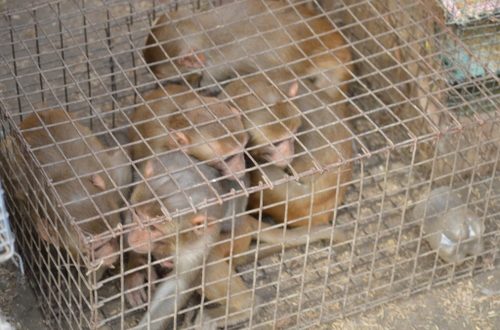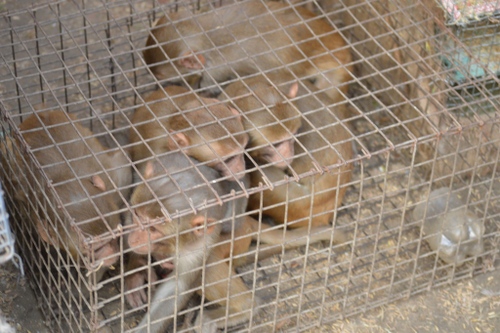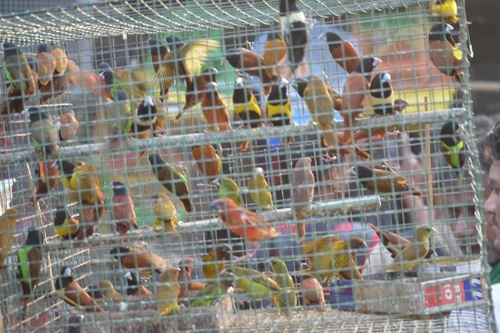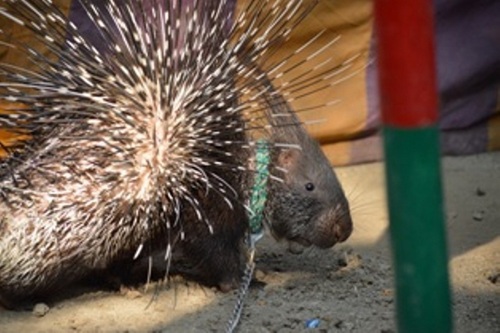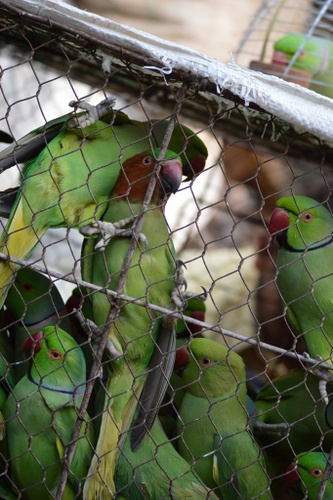Sonepur: The Illegal Wildlife Trade Fair
Sonepur, Bihar, November 18, 2014: You better get out of this place and never come back or I’ll break your camera and your neck at the same time,” the bird shop owner’s message was clear. His men were pushing me. They were fierce, loud and I felt their threats coming at me more acutely than I could ever have imagined. I was intimidated and they knew it. They sell wild animals illegally here at the Sonepur Mela each year.
I was thrown out of the bird market at Sonepur mela by noon on the third day of my visit. I had been exposed as a fraud by the gangs of traders who run the illegal wildlife trade market at Sonepur. It is not a good place to be especially if you come on the target list of a gang of traffickers, — one may disappear or beaten to pulp by strangers for reasons unknown.
Just outside the market, the State Forest Department has erected few hoardings; displaying clear pictures of the birds whose trade is banned; with the commandment ‘Thou shalt not trade in birds’ on it, informing the people, who pay attention to these things, that the sale of wildlife is a punishable offence. Nobody really bothers though. This year the market opened on the 5th of November and as I type this on the 14th, the market is still in operation.
The bird market was not open on the 5th, but it was fully functional from 7 am on the 6th morning. The bird traders seem to have an unwritten rule ensuring that they keep away from the market on inauguration day so that the authorities can inspect the market and certify that the market is free from the ‘illegal wildlife trade’. There were owls, shikras, black shouldered kites, peregrine falcons, munias, hill mynas, bank mynas and green pigeons for sale. By now thousands of birds would have already been sold in the market.
Birds under Schedule I of the Wildlife (Protection) Act, 1972, to exotic birds (not protected by any such Act) are all sold in the market. There is nothing visibly, or even possibly invisibly, done out there by the enforcement agencies or administration to ensure that the highly protected wildlife is not traded here, other than putting up an informative hoarding in the middle of the fair, of course.
I have never heard of any cases of wildlife being confiscated here and I wonder how many borders these animals had to cross to finally get here? How did the traders bring thousands of birds in hundreds of cages from Patna to Sonepur? Was it by rail or road? Why could no one stop them from reaching the fair ground where it is difficult to deal with large crowds? Questions remain unanswered as long as law enforcement stays silent only choosing to speak through ineffective flex boards.
Most of the traders have been coming here for generations. They are from “Mir Shikar Toli”, an illegal wildlife market in Patna, an infamous hub for poachers and animal dealers whose traditions are deep-rooted in wildlife trade.
Sonepur is also famous, rather infamous, for the elephant trade. Centuries ago, kings and emperors used to buy elephants from Sonepur and in the more modern times, it was elephant owners and temple administrators who were patrons until the trade in elephants was banned by the law. Elephants are brought to the fair by their owners who are adamant that they are not there to sell their elephants but just to display them. Many of them stay for weeks, spending thousands of rupees per elephant on fodder and mahouts. This year too, there were elephants on the display. Their numbers varied as the days passed, from about 35 to 39.
There was a nilgai and a porcupine in the elephant exhibit area, which were kept chained. Both species are protected under the Wildlife (Protection) Act – 1972, yet the Forest Department Officials failed to see them in the fairgrounds despite their claims of being ‘vigilant’ during the mela to ensure that there is no wildlife being illicitly traded here. It is also hard to believe that they could not identify these animals which were kept in full public view and somehow, weirdly enough, there was no action taken.
The fair is part of the culture of the region and marketed as a tourist attraction by the State Government with large advertisements in the national dailies. Senior officials declared that there is no wildlife trade occurring in the mela, citing the comments and concerns of wildlife and conservation organizations as ‘baseless allegations’. But on the mela grounds, the reality is quite different from what is portrayed to the media. This unlawful trade in wildlife – especially in birds and small animals — is still going on out there, in the open, with the numbers in thousands.
Two species of primates – langurs and macaques– were on sale too. Stuffed into small cages they were displayed publically. The sale of wildlife was not exactly furtive. People were buying and selling as usual – the way they have done for ages and the only deterrent; the mighty sign board; seems to be too far away for people to read and almost misplaced in the numerous posters which sell everything from soap to SUVs to the people of Sonepur market.
In the beginning, they never suspected me at all – I am from the region and I posed as an interested buyer. I wanted a pair of Indian grey hornbills and they told me it would set me back Rs 3000 a pair, and would be delivered in few days. If I wanted Malabar hornbills as well, they would take about a week to supply, costing me about Rs 8000 a bird.
It looked like the mela is ‘business as usual’ for the wildlife traffickers of Mir Shikar Toli. They sell what they have in stock and take orders to deliver the more exclusive and expensive goods to one’s doorstep.
The stock of birds was kept in the middle of the market by the traders and only a few were kept for sale in the stalls. They were taking precautions for sure. I counted 15 shikras and two peregrine falcons. I couldn’t count the parakeets, mynas, munias and other birds. They were in the thousands!
Only known buyers enjoyed access to the part of the market where the monkeys and mongooses were examined by the ‘Kalandars’, a community once renowned for bear dancing.
The baby monkeys sitting in cages held each other and looked around with visible fear in their eyes as they were separated from their ever protective mothers by hunters. Their eyes brought to mind stories of chained slaves from centuries past – one primate still selling another into slavery. Their eyes still show the same fear and life is still miserable whether it is in chains or leashes.
Not all birds and animals are sold. A few fortunate ones die before they undergo prolonged suffering in captivity. A large number of them were dead and thrown in into cages adding to the already unbearable stench in the holding area.
During my visits on following days, I discovered the differences between the traders and me. My SLR camera was the first slip. Someone picked me out in the crowd as I took pictures and then I was followed by the traders’ ‘negotiators’. They can be, and are, hostile to anyone they suspect. The negotiation was more physical than verbal and the message was very clear — I could not take pictures and even pulling my mobile out of my pocket was prohibited. By day three, they made sure that I could not enter the market and was stopped at the gate. I had anticipated this and after three days of regular visits, I decided to call it quits and come back home to safety.
Note: A piece commissioned by the Enforcement Assistance Team of WTI. For any information and high resolution images – please contact comms@wti.org.in

